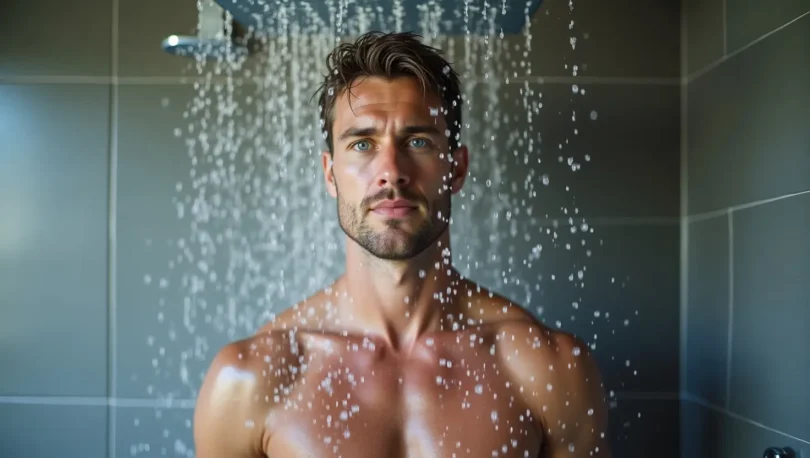Imagine stepping into an ice-cold shower first thing in the morning—your body tenses, your breath quickens, and for a moment, you question your sanity. That was me on Day 1 of my 30-Day Cold Shower Challenge. What started as a test of willpower quickly turned into a fascinating journey of self-discovery, discipline, and unexpected health benefits.
Cold shower have been praised for boosting circulation, metabolism, mental resilience, and even mood. Advocates of cold exposure therapy, including followers of the Wim Hof Method, swear by its ability to enhance energy levels, reduce stress, and strengthen the immune system. But does it really work? Can something as simple as turning the temperature dial down transform your life?
For the next 30 days, I committed to taking nothing but cold shower—no cheating, no warm water, just pure, icy determination. In this post, I’ll share my experience, the benefits (and struggles) I encountered, and whether I believe cold shower can truly change your life.
Headlines
Why I Took the 30-Day Cold Shower Challenge
The Science Behind Cold Shower
My 30-Day Experience with Cold Shower
Should You Try the Cold Shower Challenge?
- Who Might Benefit the Most?
- Tips for Getting Started with the Cold Shower Challenge
Why I Took the 30-Day Cold Shower Challenge
I had always heard about the supposed benefits of cold showers—improved circulation, increased energy, and even a stronger immune system. But like most people, I had a deep attachment to my warm, comforting showers. The thought of willingly subjecting myself to icy water every day for a month sounded extreme, even unnecessary. So why did I decide to take on the 30-Day Cold Shower Challenge?
Seeking Mental Resilience and Discipline
One of my main motivations was the mental challenge. Cold showers are often associated with mental toughness. The idea of forcing myself to endure discomfort daily intrigued me. Could I push past my limits? Would this habit make me more disciplined in other areas of life? Many successful people swear by cold showers as a tool for building mental resilience, and I wanted to see if it truly worked.
The Science Behind Cold Exposure
Beyond the mental aspect, I was curious about the scientific benefits of cold exposure. Research suggests that cold showers stimulate the release of dopamine and endorphins, which can improve mood and reduce stress. They also activate brown fat, a type of fat that burns calories to generate heat, potentially aiding metabolism. Additionally, cold exposure is known to boost circulation and help regulate the body’s stress response by lowering cortisol (the stress hormone). With so many potential benefits, I felt it was worth testing for myself.
Inspired by the Wim Hof Method
Another inspiration came from Wim Hof, also known as “The Iceman.” His cold exposure therapy method, which combines controlled breathing techniques with cold immersion, has gained worldwide attention. His claims of improved endurance, faster recovery, and even an immune system boost intrigued me. While I wasn’t ready to jump into ice baths just yet, I figured a daily cold shower would be a good place to start.
Breaking Free from Comfort Zones
I also wanted to challenge myself by stepping out of my comfort zone. In today’s world, we seek convenience and comfort at all costs—heated homes, soft beds, and, of course, warm showers. But growth often happens in discomfort. By exposing myself to daily discomfort in a controlled way, I hoped to build a stronger mindset that would help me tackle other challenges in life.
Expectations vs. Reality
Going into the challenge, I expected it to be incredibly difficult. I assumed I’d dread every shower, shiver uncontrollably, and possibly give up halfway through. But I was also hopeful that by the end of 30 days, I’d feel more energized, focused, and possibly even healthier. My goal was simple: stick to the challenge, track my experience, and see if cold shower could truly change my life.
Little did I know, this experiment would test me in ways I didn’t expect.
The Science Behind Cold Shower
Cold shower have been used for centuries as a form of therapy, recovery, and rejuvenation. But what does science say about their effects on the human body? From boosting circulation to activating brown fat and reducing stress, cold exposure has been studied for its potential health benefits. Let’s dive into the physiological and psychological changes that occur when you step under icy water.
1. Cold Shower and Circulation: Boosting Blood Flow
When you expose your body to cold water, your blood vessels constrict in a process called vasoconstriction. This forces blood to circulate more efficiently, directing it toward your vital organs to maintain core body temperature. Once you step out of the cold shower and start warming up, the blood vessels dilate (vasodilation), allowing increased blood flow throughout the body. This alternating constriction and dilation can:
- Improve overall circulation, leading to better oxygenation of muscles and tissues.
- Reduce muscle soreness and inflammation, making it beneficial for athletes.
- Help cardiovascular health by promoting stronger blood vessel function over time.
2. Brown Fat Activation: The Body’s Natural Heater
Unlike white fat, which stores excess energy, brown fat (brown adipose tissue) is metabolically active and burns calories to generate heat. Cold exposure stimulates brown fat activity through a process called non-shivering thermogenesis, helping the body adapt to colder temperatures. Studies suggest that regularly exposing yourself to cold temperatures can:
- Boost metabolism, potentially aiding in weight management.
- Improve energy levels, as brown fat activation enhances calorie burning.
- Regulate body temperature more efficiently in colder environments.
3. Dopamine and Endorphin Release: The Mood-Boosting Effect
Cold shower don’t just affect the body—they also have a significant impact on the brain and nervous system. Cold exposure has been shown to trigger the release of dopamine, a neurotransmitter associated with pleasure and motivation. Additionally, the body releases endorphins, which are natural painkillers that improve mood and create a feeling of euphoria. This explains why many people report feeling more awake, alert, and even happier after a cold shower.
4. Strengthening the Immune System
Some research suggests that regular cold shower can strengthen the immune system by increasing the production of white blood cells, which help fight infections. A Dutch study found that people who took cold shower daily were 29% less likely to call in sick compared to those who didn’t. The proposed mechanism behind this effect is that cold exposure triggers a mild stress response, training the immune system to become more resilient over time.
5. Cold Shower and the Nervous System: Reducing Stress and Anxiety
When you step into a cold shower, your sympathetic nervous system (the fight-or-flight response) is activated. This causes an initial spike in heart rate, breathing rate, and adrenaline levels. However, with consistent exposure, the body learns to adapt, leading to a more balanced stress response over time. Cold shower have been linked to:
- Lower levels of cortisol (the stress hormone), reducing overall stress and anxiety.
- Better adaptation to stressful situations, improving resilience.
- A calming effect on the mind, which may help with depression symptoms.
6. Cold Shower and Muscle Recovery
Athletes often use cold water immersion (such as ice baths) to speed up muscle recovery. While cold shower aren’t as extreme, they still provide benefits by reducing inflammation and muscle soreness. This makes them a great post-workout recovery tool, helping to:
- Reduce delayed onset muscle soreness (DOMS).
- Improve muscle repair and circulation.
- Enhance overall recovery, making training more effective.
Final Thoughts: Is the Science Solid?
While many of these benefits are backed by studies, it’s important to remember that cold shower are not a miracle cure. Their effects may vary from person to person, and they should be used as a tool alongside a healthy lifestyle. However, the combination of improved circulation, stress resilience, immune system support, and mental clarity makes cold shower a powerful habit worth considering.
In the next section, I’ll share my personal experience with the 30-day cold shower challenge—what changed, what didn’t, and whether I’d recommend it to others.
My 30-Day Experience with Cold Shower
Taking on the 30-Day Cold Shower Challenge was no small feat. I had heard about the many benefits—improved mood, increased energy, better circulation—but I wasn’t sure how my body and mind would react. Would I get used to the freezing water, or would every shower feel like a punishment? Here’s a breakdown of my experience, week by week, including the challenges, unexpected benefits, and lessons I learned.
Week 1: The Initial Shock
The First Few Days: Pure Torture
The first time I turned the dial to full cold, my body immediately went into shock. My breathing became rapid, my muscles tensed up, and my brain screamed at me to step out. The first 10 seconds felt unbearable, and I struggled to stay under for even a minute.
But I had made a commitment, so I forced myself to endure it. To help, I focused on controlling my breathing, taking deep, slow breaths instead of panicking.
Challenges Faced
- Breath control was difficult—I would gasp for air involuntarily.
- Muscles felt tight and stiff due to the sudden cold exposure.
- Mentally, I dreaded each shower, making it hard to step in willingly.
Early Observations
- After each shower, I felt an adrenaline rush—I was wide awake and alert.
- I noticed a sense of accomplishment for overcoming the discomfort.
- My skin felt tighter, and my body adapted slightly after the first few days.
Week 2: Adaptation Phase
Getting Used to the Cold
By the second week, I noticed a shift in my mindset. While I still felt discomfort stepping into the shower, my initial shock was less intense. My body started adjusting, and I was able to stand under cold water for 2–3 minutes without panicking.
Physical and Mental Changes
- Energy levels increased—I felt more alert throughout the day.
- Mood improvement—I felt more positive and resilient.
- Faster recovery after workouts—muscle soreness didn’t last as long.
- Morning routine was more structured—I used my cold shower as a mental “reset.”
Biggest Challenge
- Staying consistent—some mornings, I dreaded stepping in, especially when it was cold outside.
Week 3: Unexpected Benefits & Challenges
Surprising Benefits
By the third week, I noticed several unexpected benefits:
- Stress management improved—I felt less reactive to stressful situations.
- Better skin and hair—my skin felt firmer, and my hair looked shinier.
- Increased mental clarity—the post-shower alertness helped me focus better.
I also noticed that my mood was consistently better, likely due to increased dopamine and endorphin release. Instead of feeling sluggish in the mornings, I felt refreshed and motivated.
Challenges & Downsides
- My hands and feet sometimes felt cold throughout the day, possibly due to circulation changes.
- Dry skin—although my skin felt firmer, I had to moisturize more often.
- The initial shock never fully went away—I got used to it, but it was still uncomfortable every time.
Week 4: The Final Stretch & Key Takeaways
By the last week, cold showers had become part of my daily routine. I no longer hesitated before stepping in—I accepted the discomfort and embraced the challenge.
Final Physical & Mental Changes
- Energy levels remained high, even on days when I was sleep-deprived.
- My ability to handle discomfort improved, both physically and mentally.
- I felt more disciplined and resilient—pushing through the cold became a metaphor for pushing through other challenges in life.
Did Cold Showers Change My Life?
While cold showers didn’t magically transform me overnight, they definitely had a positive impact on my mood, energy, and mindset. The most valuable lesson was learning to embrace discomfort—something that translates to all areas of life.
Would I continue this habit? Absolutely. I might not take cold showers every day, but I see the value in incorporating them into my routine a few times a week.
In the next section, I’ll discuss who might benefit most from cold showers and some tips for getting started.
Related: 10 Benefits of Cold Showers: Why You Should Try Them Today
Should You Try the Cold Shower Challenge?
After completing the 30-Day Cold Shower Challenge, I can confidently say that cold showers offer a unique set of benefits that can positively impact both physical and mental well-being. However, this challenge is not for everyone, and before jumping in, it’s important to consider your personal health, goals, and readiness to embrace discomfort. In this section, I’ll break down who might benefit the most from taking on this challenge, as well as provide some helpful tips for getting started.
Who Might Benefit the Most?
While cold showers can benefit almost anyone, certain groups of people may experience greater advantages from incorporating this habit into their daily routine. If you fall into any of these categories, the cold shower challenge could be particularly rewarding:
1. Athletes and Fitness Enthusiasts
If you’re someone who works out regularly or participates in high-intensity training, cold showers can help speed up muscle recovery and reduce inflammation. Cold exposure has been shown to decrease delayed onset muscle soreness (DOMS), allowing athletes to recover more quickly between workouts. If you’re looking to boost performance and enhance recovery time, cold showers could become a key part of your post-workout routine.
2. People Struggling with Stress or Anxiety
Cold showers have a profound effect on the nervous system, helping to lower cortisol levels (the stress hormone) and promote a calm, clear mind. If you’re constantly stressed, overworked, or struggling with anxiety, regular cold showers might offer a quick and effective way to reset your mood and improve emotional regulation. Cold exposure can act as a natural stress reliever, helping you build resilience to stressors in your daily life.
3. Individuals Seeking to Boost Their Immune System
If you’re prone to illness or want to strengthen your body’s defenses, cold showers can stimulate the production of white blood cells, which play a crucial role in fighting infections. Studies have suggested that cold exposure may enhance the immune response, helping to boost immunity and reduce the frequency of colds and flu. For those seeking to maintain a healthier lifestyle and bolster their immune system, cold showers can be a great tool.
4. People Looking for a Morning Energy Boost
For many, getting out of bed and starting the day can be the hardest part of the morning. If you find it difficult to get going in the morning or experience fatigue throughout the day, cold showers might be just the jolt you need. The shock of cold water immediately increases alertness, energy, and circulation, helping you feel wide awake and ready to tackle your day.
5. Anyone Looking to Build Mental Toughness
Taking cold showers requires a certain level of mental resilience. The discomfort forces you to confront fear, discomfort, and hesitation head-on, training your mind to embrace challenges rather than shy away from them. If you’re someone who wants to build discipline, strengthen your willpower, and overcome mental barriers, the cold shower challenge can serve as an excellent tool for personal growth.
Tips for Getting Started with the Cold Shower Challenge
If you’re interested in trying the 30-Day Cold Shower Challenge, here are a few tips to help you ease into it and maximize the benefits:
1. Start Slowly
Jumping straight into an ice-cold shower can be overwhelming, especially if you’re not used to cold exposure. Start by gradually lowering the temperature in your shower over a few days or weeks. Begin with lukewarm water and then slowly reduce the temperature until you can handle the cold. This gradual approach will help your body adjust without shocking your system too much.
2. Use Breathing Techniques
One of the key components to surviving and thriving during a cold shower is controlling your breath. When you first step into cold water, your body will likely go into shock, and your breathing will become erratic. To counter this, practice deep breathing techniques such as slow, deep inhales and exhales to calm your nervous system and stay relaxed. Wim Hof breathing, a method that combines breathing exercises with cold exposure, can also help you become more comfortable in cold showers.
3. Keep Your Shower Short
At first, it can be difficult to stand under cold water for long periods of time. Aim to stay in the cold shower for 2-3 minutes during your first week and gradually work your way up as your body adapts. While some people take longer cold showers, 2-3 minutes is often enough to reap the benefits of circulation, energy boosts, and mental clarity.
4. Pay Attention to Your Body
If you have underlying health conditions such as heart disease or circulatory problems, it’s important to consult with a doctor before starting a cold shower routine. Cold exposure can put additional strain on the heart and blood vessels, so it’s essential to listen to your body and stop if you feel dizzy, lightheaded, or unwell.
5. Make It Part of a Routine
For the challenge to be truly effective, consistency is key. Incorporate cold showers into your daily routine, ideally in the morning, to take full advantage of the energy-boosting and stress-reducing effects. If you make it a regular part of your day, the mental benefits will become more noticeable as time goes on.
6. Stay Positive and Embrace the Discomfort
The hardest part of the cold shower challenge is the initial discomfort. However, it’s important to stay positive and remind yourself of the potential benefits you’re working toward. Over time, your body and mind will adapt, and the discomfort will diminish, allowing you to enjoy the boost in energy and resilience that comes with this cold therapy.
Final Thoughts: Is the Cold Shower Challenge Right for You?
Ultimately, whether or not you should try the Cold Shower Challenge depends on your personal health, goals, and willingness to embrace discomfort. For some, it can be a powerful tool for boosting energy, improving mental resilience, and supporting physical recovery. For others, it may be too much of a shock to the system, especially if you have specific health conditions or are highly sensitive to cold.
If you’re ready to push yourself and are curious about the science-backed benefits of cold exposure, then I highly recommend giving it a try. Start slowly, stay consistent, and be patient—your body and mind will thank you for it!








Leave a Comment